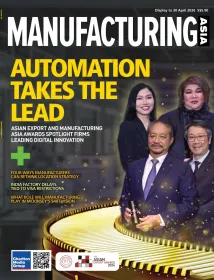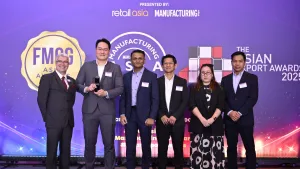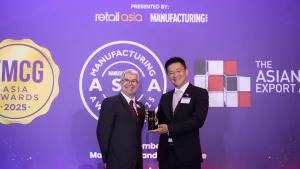Embarking on the smart operations journey: A new era of cost management in manufacturing
By Chris de Lavigne and Samrat BoseTraditional cost management models come with a common pitfall, they neglect strategic investments in favour of short-term profitability.
Almost all manufacturing value chains to date have been developed based on cost models focused on getting the lowest price possible to manage the overall cost of making a product. While managing costs will always be critical, what manufacturers are increasingly learning is that their traditional cost management models come with a common pitfall: in striving for short-term profitability, they neglect strategic investments in favour of short-term cost reductions.
Often, such a strategy has the counterproductive effects of stifling innovation, degrading product or service quality, lowering employee morale, and resulting in missed growth opportunities. Lean manufacturing, for example, used to be a means to keep costs down, but because that approach relies on precise, just-in-time inventory controls, an increase in supply chain disruptions makes it more difficult to implement without exposing the manufacturer to costly inventory shortages.
With growth now at the top of many leaders’ agendas, manufacturers are increasingly recognising that they must adopt a strategic, more holistic approach to cost management instead. For many, this means having to move away from traditional approaches to pursuing cost reductions in silos – which are often accompanied by the potential for unintended consequences that could stifle the company’s long-term growth – as well as strategically freeing up capital to invest in long-term growth opportunities.
The case for smart operations
Across the globe, we have observed interesting examples of how manufacturers are fundamentally rethinking their approach to cost management. One common strategy is to invest in advanced technologies – which include, but are not limited to, Industry 4.0 machine-to-machine communications, artificial intelligence (AI), advanced automation, and integrated data systems – that help open new avenues for cost optimisation.
Such a concept, which we refer to as ‘smart operations’, leverages digital technologies to enable the autonomous optimisation of manufacturing performance in real or near-real time, and connects manufacturers to a global network of digital supply networks to drive greater collaboration amongst the different players along the manufacturing value chain.
In their most mature form, smart operations comprise three key components:
- Establishing a digital record: A smart operations process captures information from the physical world to establish a digital record and single source of truth of the physical operation and supply network;
- Enabling advanced analytics and visualisations: Machines “talk” to each other process to share information, allowing for advanced analytics and visualisations of real-time data from multiple sources; and
- Generating action: Algorithms and automation are applied to translate decisions and actions from the digital world into activity in the physical world to increase operational efficiency, drive cross-functional savings, or identify additional revenue-generating opportunities.
According to a global study by Deloitte, manufacturers running smart operations have, on average, benefitted from a 10% increase in production output, 11% increase in capacity utilisation, and 12% increase in labour productivity. Smart operations can also speed new products to market by reducing innovation development time by as much as 30%.
Three principles for the smart operations journey
Having established the case for smart operations, the question is where – and how – do manufacturers start implementing smart operations? As manufacturers embark on this journey, we suggest that they begin by considering three principles:
Principle 1: Prioritise long-term investments
Transformational change does not happen all at once. Smart operations initiatives generally require targeted, long-term investments. Manufacturers should therefore focus their efforts on addressing specific pain points – for example, in asset intelligence, performance management, dynamic scheduling, or energy management – and conducting a thorough analysis of spending and processes across the entire organisation to identify not just savings, but also opportunities to enhance long-term value.
Such a strategy involves a cultural shift from merely seeking to minimise costs to optimising them in a way that supports sustainable growth and competitive advantage. Here, the key lies in leveraging digital technology to become more efficient and spend less on operations and maintenance, in order to free up capital to be channelled into investments in the future.
Based on our cumulative experience, we have found these potential cost savings and efficiencies to be highly significant; however, manufacturers must invest upfront in upgrading legacy data systems. This necessarily includes, as a first step, committing to the replacement of siloed data architecture with holistic systems capable of providing a single source of truth, and making information instantly available throughout the organisation.
Principle 2: Integrate technology with everything
While value can be realised from the transformation of a single manufacturing facility, the value that can be realised by scaling integrated digital solutions across a network of digital supply networks is exponentially greater. Achieving this will entail expanding the capture and analysis of greater and different data sets and types, with additional considerations for analytical, storage, and management capabilities.
Indeed, connectivity is critical to illuminating the ‘hidden factory’ – that is, the behaviours, resource flows, and production data that had perhaps always been there but were in the “dark” due to the lack of digitalisation – and enabling the deployment of next-generation AI use cases.
When done right, such tools can help manufacturers mitigate costly disruptions by enabling leaders to make faster decisions in response to changing regulations, geopolitical events, and natural disasters. Some manufacturers, for example, have leveraged AI tools to source products globally and recommend the best suppliers for necessary parts, as well as optimise their logistics supply chains in real time in the event of disruptions to usual shipping routes.
Principle 3: Rely on strategic partners
Some manufacturers have an adversarial relationship with their suppliers, while others consider them to be strategic partners. Given the increasingly global footprint of manufacturers and growing complexity of their supply chains, partner relationships and collaborations are becoming increasingly critical to driving transformation and providing continuous innovation.
In some cases, external partners can also be trusted with managing core business risks. For example, manufacturers are turning to external risk management platforms to help identify, flag, and mitigate AI and data-related risks before they become crises. Such a strategic external partnership can help protect against devastating fraud or reputational damage and ensure the organisation’s future resilience while keeping costs from ballooning.
Towards a new era of cost management in manufacturing
Far from being an end state, smart operations represent an evolving solution – one that speaks to an unending imagination of the nearly endless configurations of Industry 4.0 technologies that it makes plausible. From a manufacturer’s perspective, the benefits of investing in smart operations go beyond immediate operational improvements; smart operations fundamentally equip manufacturers with futureproof capabilities to compete in an ever-more complex, volatile, and dynamic geoeconomic environment.
A word of caution, though: while technological tools are now a key enabler for cost optimisation strategies, tech investments, themselves, can also run the risk of creating unnecessary costs. Technologies implemented too quickly and widely may only magnify failure and increase costs. The challenge for manufacturers, therefore, lies in scaling smart operations in a way that makes a tangible difference across the organisation.
















